Issue Archive
Table of Contents
BLOOD COMMENTARIES
PLENARY PAPER
JAK/STAT pathway inhibition sensitizes CD8 T cells to dexamethasone-induced apoptosis in hyperinflammation
In a Plenary Paper, the authors demonstrate that cytokine-induced JAK/STAT signaling mediates cell resistance to dexamethasone and that glucocorticoid-induced apoptosis can be reestablished with the JAK inhibitor ruxolitinib. This suggests that dexamethasone plus ruxolitinib is a potent combination for treating hemophagocytic lymphohistiocytosis (HLH) and other cytokine storm–related syndromes.
BLOOD SPOTLIGHT
Direct oral anticoagulants and cancer-associated VTE: good for all, or just some?
In this Blood Spotlight, Carrier and Wang review the role of direct oral anticoagulants (DOACs) in the treatment of cancer-associated venous thromboembolism (VTE). Four recent clinical trials comparing DOACs to low-molecular-weight heparin (LMWH) have demonstrated that DOACs are noninferior to LMWH with regard to efficacy, with some trials showing increased bleeding, especially in patients with gastrointestinal malignancy. The authors review considerations for choosing appropriate VTE therapy.
CLINICAL TRIALS AND OBSERVATIONS
Oral cedazuridine/decitabine for MDS and CMML: a phase 2 pharmacokinetic/pharmacodynamic randomized crossover study
Clinical Trials & Observations
Oral therapy for myelodysplasia (MDS) and chronic myelomonocytic leukemia (CMML) has potential advantages for patients, but oral decitabine is rapidly metabolized by adenosine deaminase (ADA). To attempt to overcome this barrier, the authors present a phase 2 study comparing the combination of an oral ADA inhibitor, cedazuridine, and oral decitabine to IV decitabine, demonstrating similar systemic decitabine exposure, safety, and demethylating activity.
LYMPHOID NEOPLASIA
LUBAC accelerates B-cell lymphomagenesis by conferring resistance to genotoxic stress on B cells
Diffuse large B-cell lymphoma of the activated B-cell type (ABC-DLBCL) often overexpresses linear ubiquitin chain assembly complex (LUBAC). Jo et al studied a mouse model of LUBAC overexpression, demonstrating that LUBAC cooperates with MYD88 to promote lymphomagenesis and can be targeted by a LUBAC-specific inhibitor. Since MYD88-mutated ABC-DLBCL often overexpresses LUBAC, this study suggests a potential new approach to therapy for these poor-prognosis lymphomas.
MYELOID NEOPLASIA
Human erythroleukemia genetics and transcriptomes identify master transcription factors as functional disease drivers
Fagnan et al studied the genetic landscape of acute erythroleukemia (AEL) in a cohort of 33 patient samples. Transcriptomics confirm that these leukemias segregate into 3 subgroups. The authors discerned a shared AEL-specific pattern of aberrant expression of regulators of erythroid differentiation converging on repression of GATA1 activity.
PLATELETS AND THROMBOPOIESIS
RED CELLS, IRON, AND ERYTHROPOIESIS
Hepatic transferrin plays a role in systemic iron homeostasis and liver ferroptosis
Yu et al dissected the complex role of transferrin in maintaining iron homeostasis. In elegant mouse studies, they demonstrated that transferrin, which is synthesized primarily in the liver, is important in blocking hepatic iron accumulation. Liver-specific transferrin knockout mice develop severe iron overload and hepatic fibrosis that can be blocked by deleting a second iron transporter, Slc39a14.
THROMBOSIS AND HEMOSTASIS
A hemophilia A mouse model for the in vivo assessment of emicizumab function
The bispecific antibody emicizumab bridges factor IXa and factor X, effectively replacing the function of factor VIII in hemophilia A, but measurement of factor VIII activity is inaccurate in the presence of the drug. Using a novel approach in a hemophilia mouse model, Ferrière et al confirmed that emicizumab generates a factor VIII activity equivalent to about 9% and that small doses of factor VIII greatly enhance its efficacy against bleeding, providing a platform for optimizing therapy.
VASCULAR BIOLOGY
LETTERS TO BLOOD
Improved clinical symptoms and mortality among patients with severe or critical COVID-19 after convalescent plasma transfusion
Clinical Trials & Observations
Two case series examining the impact of convalescent plasma on patients with COVID-19 suggest some clinical benefit from early administration and modest impact on parameters of inflammation. Further assessment of the impact of this intervention awaits controlled clinical trials.
Use of convalescent plasma in hospitalized patients with COVID-19: case series
Clinical Trials & Observations
Two case series examining the impact of convalescent plasma on patients with COVID-19 suggest some clinical benefit from early administration and modest impact on parameters of inflammation. Further assessment of the impact of this intervention awaits controlled clinical trials.
Convalescent plasma to treat COVID-19
Clinical Trials & Observations
Chronic lymphocytic leukemia management in Italy during the COVID-19 pandemic: a Campus CLL report
Red cell–bound antibodies and transfusion requirements in hospitalized patients with COVID-19
Berzuini et al report the observation that nearly half of patients with COVID-19 tested at their blood center had a positive direct antiglobulin test (DAT). However, eluates did not react with any test cells but did react with red cells from other patients with COVID-19 that were DAT negative. This suggests that COVID-19 may modulate the red cell membrane and present novel antigenic epitopes.
BLOOD WORK
ERRATA
-
Cover Image
Cover Image
![issue cover]()
Human megakaryocyte imaged via laser fluorescence confocal microscopy, showing NBEAL2 (green), SEC22B (red), and nuclear DNA (blue). See the article by Lo et al on page 715.
- PDF Icon Front MatterFront Matter
- PDF Icon Table of ContentsTable of Contents
- PDF Icon Back MatterBack Matter
- PDF Icon Editorial BoardEditorial Board
Advertisement intended for health care professionals
Email alerts
Advertisement intended for health care professionals



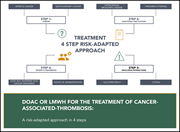
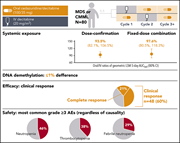


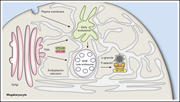
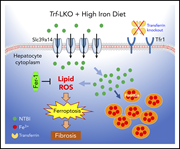
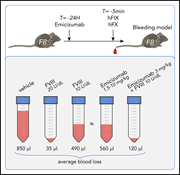


One-two punch of cytokine storm syndrome